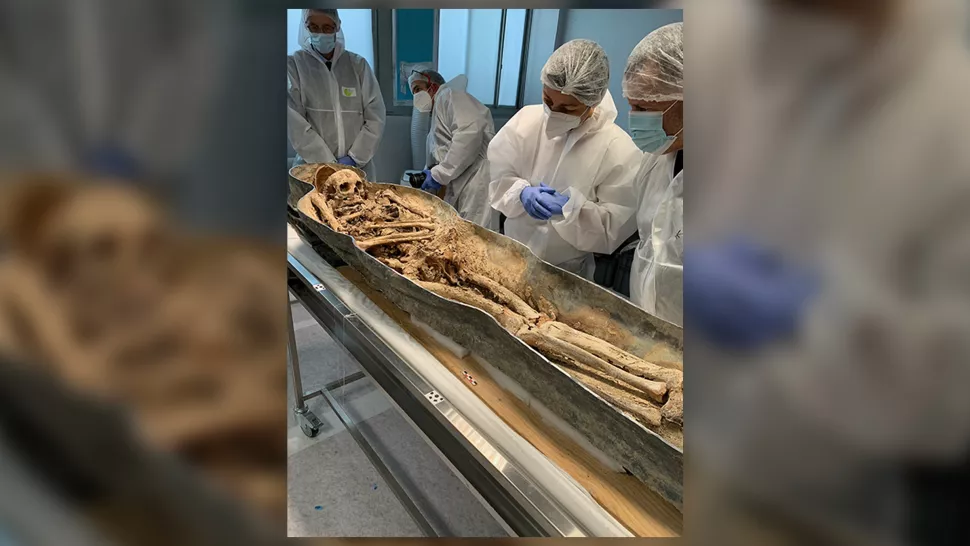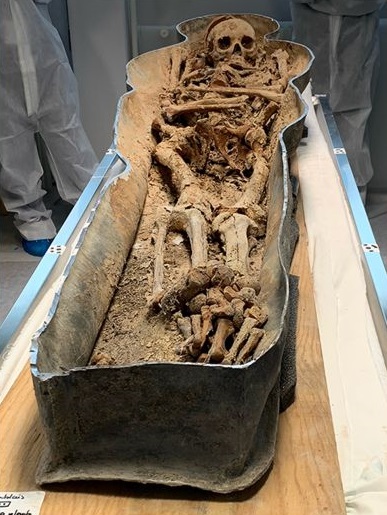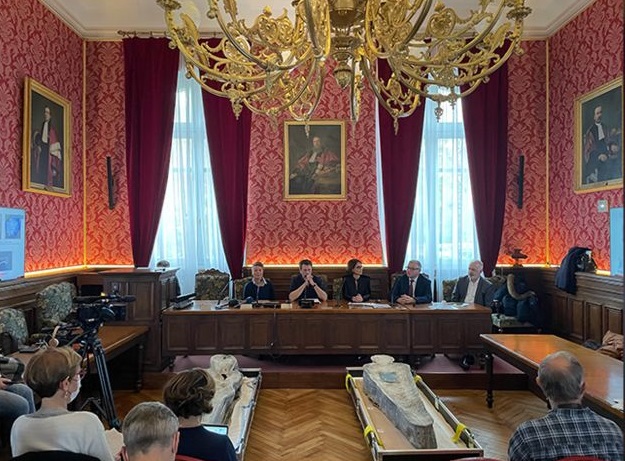Notre Dame’s spire had 2 hidden coffins beneath it. Now, scientists know who was buried there.
Remains of two wealthy men — one clergy and the other young and noble — have been discovered in the lead sarcophagi found buried at Notre Dame.
The day after the world watched Notre Dame Cathedral burn three years ago, archaeologists were called to survey the damage and assist with the long and painstaking process of restoration. During excavations at the cathedral in early 2022, researchers found two unusual lead sarcophagi dating to centuries ago, but it was anyone’s guess who was buried within them. Now, researchers have announced their findings: the sarcophagi contain the remains of two wealthy men, one ecclesiastical who may have had the “disease of kings,” and the other young and noble, but whose remains hinted at a hard life.
Eric Crubézy(opens in new tab), professor of biological anthropology at the University of Toulouse III, oversaw the opening of the coffins last month and has studied the bones to learn more about the men’s age-at-death and lifestyles. “The first subject is identified via an identification plate on his coffin,” Crubézy told Live Science in an email. The brass plate gives his name as Antoine de la Porte, who died at age 83 on Dec. 24, 1710.
De la Porte was a canon, Crubézy said, or a member of the clergy responsible for the cathedral. He used his wealth to help shore up Notre Dame’s choir, which may explain his burial underneath the central part of the transept, an area reserved for the final resting place of the elite.\
According to a translated statement(opens in new tab) from the University of Toulouse, de la Porte’s remains are quite well preserved — including his bones, head and beard hair, and some textiles — and there were three medals placed on top of his sarcophagus. Crubézy said that the canon’s teeth were in great shape but that there were hardly any signs of physical activity on his body, meaning this individual was likely sedentary during his lifetime. The man’s big toe bone, however, did show signs of gout, a kind of inflammatory arthritis. Since gout can be triggered by drinking and eating to excess, it has often been called the “disease of kings.”
The second lead sarcophagus lacked a name plate, so its occupant remains anonymous at the moment. This man was between 25 and 40 years old at death, but his body betrayed a difficult life. “He shows signs of someone who has been riding horses from a young age,” Crubézy said, “and he lost most of his teeth in the years and months leading up to his death.”
Crubézy also found evidence of reactive bone on the man’s skull and spine, causing him to hypothesize that the man’s cause of death could have been chronic meningitis as a result of tuberculosis.
Even more intriguing was the post-mortem funeral practice for the unknown man, nicknamed “Le Cavalier.” Although this man’s hair was not preserved, researchers discovered leaves and flowers around his skull and on his abdomen. “The horseman’s skull had been sawn off and his chest opened to be embalmed,” Crubézy said. “This was common practice in the nobility after the [mid 16th century].”
Identifying “Le Cavalier” depends on when he died, which could be anywhere between the 14th and 18th centuries. “If the date of his death was around the second half of the 16th century or early 17th century, we may be able to identify him in the death register that we have. If it’s earlier than that, we probably won’t ever know who he was,” Christophe Besnier, the archaeologist who led the National Institute of Preventive Archaeological Research(opens in new tab) (INRAP) excavation team, said in a press conference on Dec. 9, as reported by The Guardian(opens in new tab).
Additional research in the coming months will focus on discovering more about the men’s geographical origin and their diets, and may provide further clues to their lifestyles and deaths. Final results of these analyses are expected in early to mid-2023.
Hits: 0




